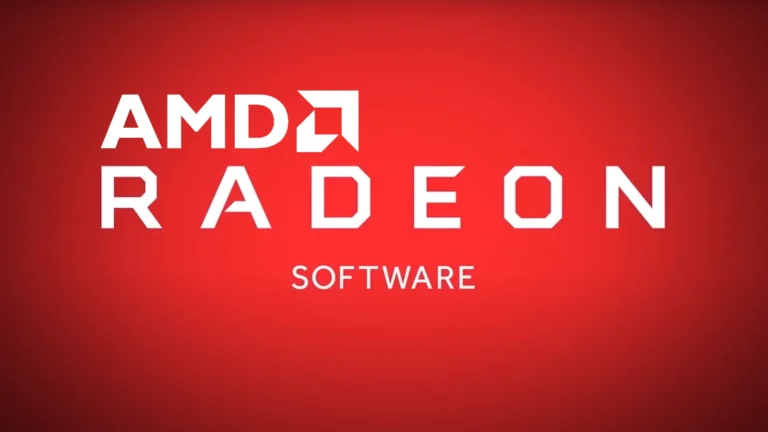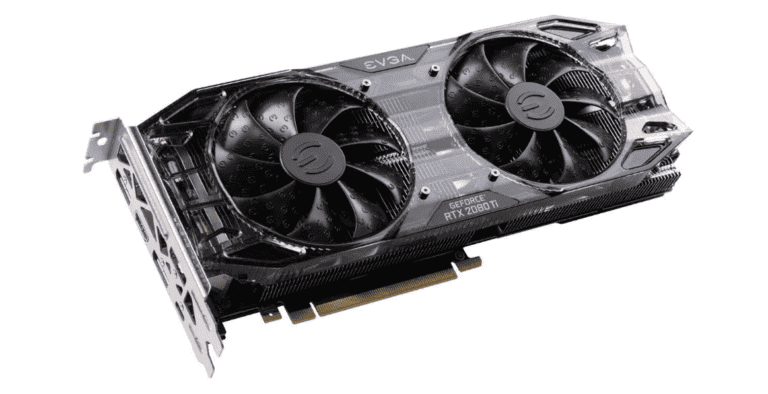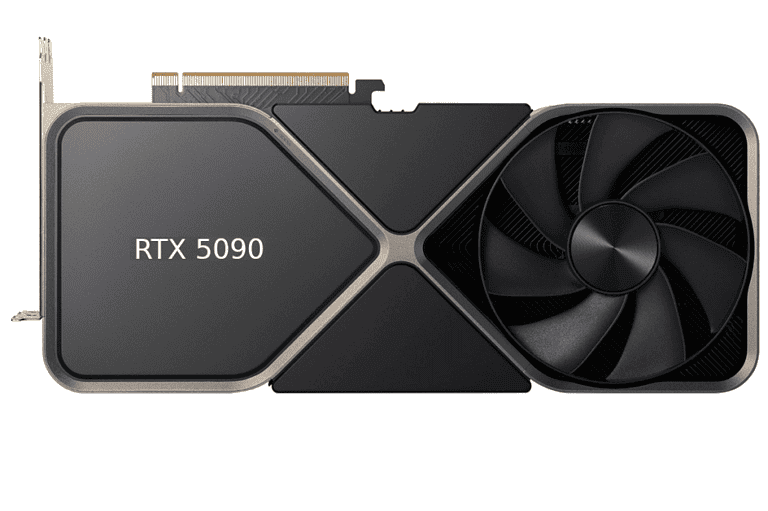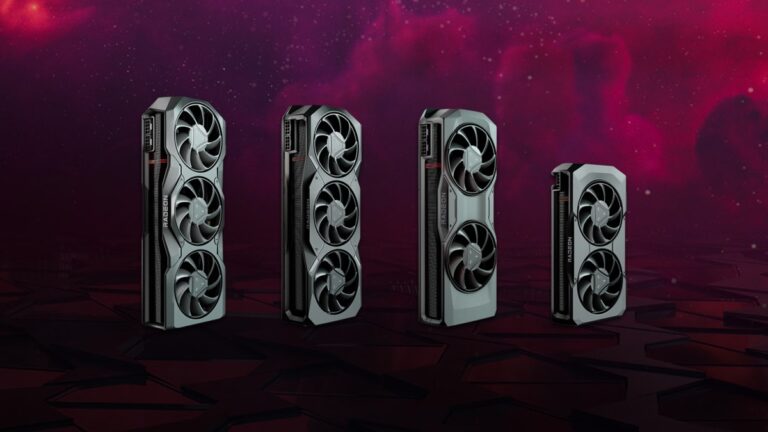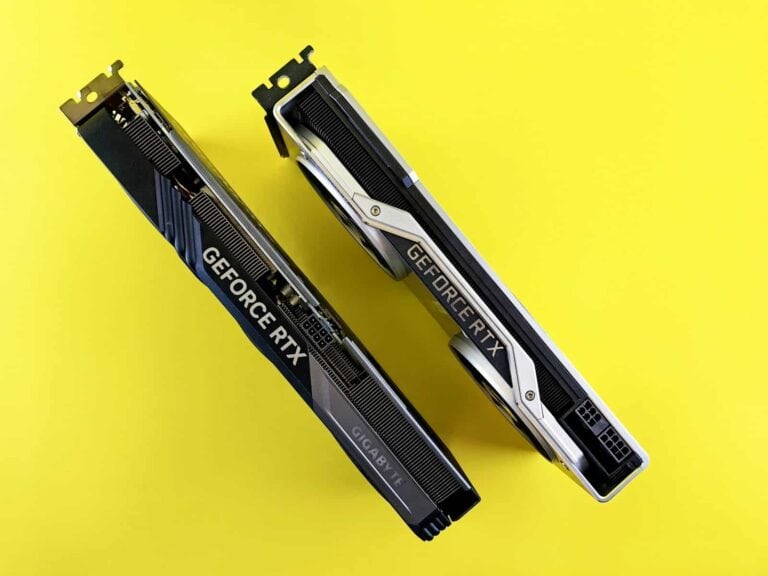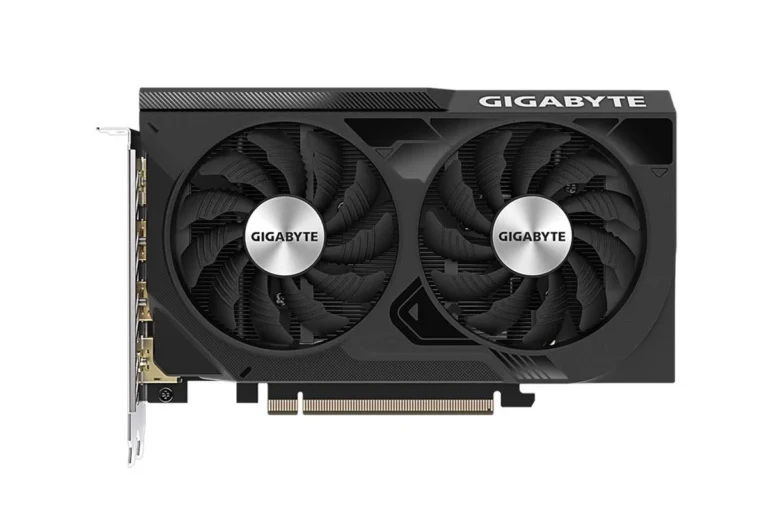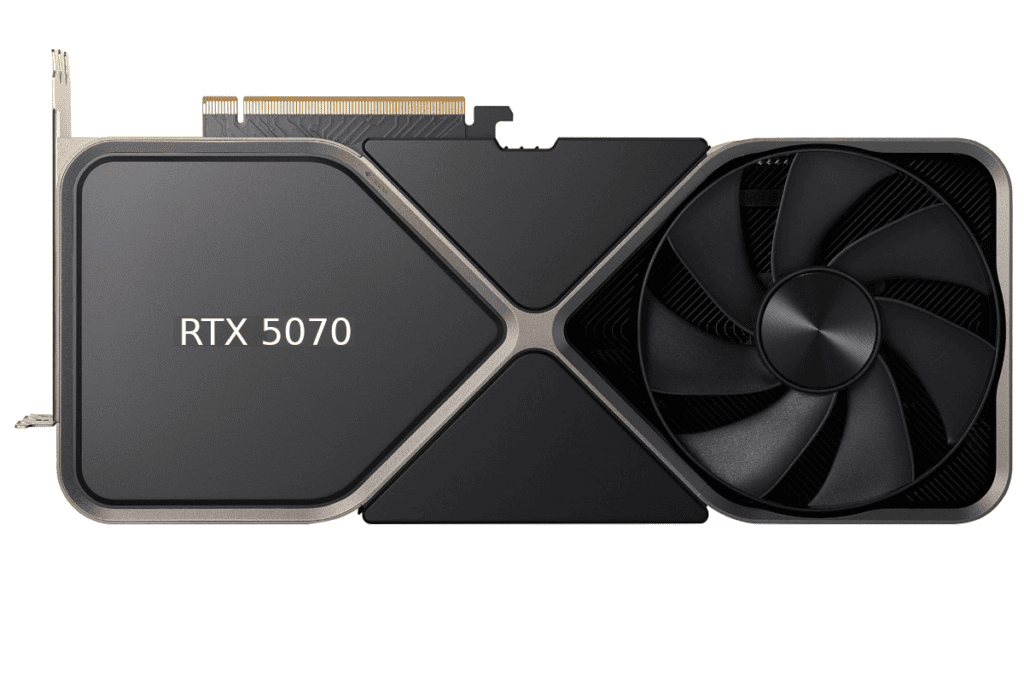
The RTX 5070 is set to be NVIDIA’s next-generation mid-range graphics card. Expected to launch in 2025, it aims to deliver improved performance for gamers and content creators. The RTX 5070 is rumored to feature 6400 shading units and 12 GB of GDDR7 memory, potentially offering a significant boost over its predecessor. Nvidia’s upcoming RTX 5070 will redefine mid-range gaming and balances power and efficiency, offering a huge upgrade for gamers seeking the sweet spot between performance and price.
This upcoming GPU is part of NVIDIA’s Blackwell architecture, which succeeds the current Ada Lovelace generation. While exact specifications are not yet confirmed, early reports suggest the RTX 5070 may have a power draw of around 220 watts. This could indicate a balance between performance gains and energy efficiency.
As with previous generations, the RTX 5070 is likely to support advanced features like ray tracing and DLSS. These technologies enhance visual quality and boost frame rates in supported games. Gamers and professionals alike eagerly await more details about this new graphics card and its capabilities.
Latest Updates About the RTX 5070
The world of PC gaming is eagerly anticipating Nvidia’s next generation of GPUs, and the RTX 5070 is shaping up to be a compelling mid-range option. While official details remain elusive, leaked information and rumors offer a glimpse into what we might expect.
Release Date Info
Initial rumors suggested a potential launch in late 2024 for the 5070, but more recent reports hint at a possible delay to early 2025. This shift could be attributed to various factors, including supply chain constraints, the ongoing global chip shortage, or Nvidia’s strategic timing in response to market conditions and competitor releases.
Some speculate that Nvidia might prioritize the launch of its higher-end GPUs, such as the RTX 5080 and RTX 5090, before unveiling the mid-range RTX 5070. This staggered release approach could allow Nvidia to maximize its marketing efforts and cater to different segments of the gaming community.
Potential Specs: A Mixed Bag
- Core Count and Architecture: Leaks suggest the RTX 5070 might see a reduction in core count compared to its predecessor, the RTX 4070. It’s rumored to feature 50 Streaming Multiprocessors (SMs), down from 60 in the RTX 4070. However, it’s expected to be built on TSMC’s advanced 3nm process, promising improved efficiency and performance per core.
- Memory and Bandwidth: Speculations point towards 12GB or 16GB of GDDR7 memory with a 192-bit or 256-bit memory interface, respectively. This would provide a significant boost in memory bandwidth compared to the RTX 4070.
- Performance: Early estimates suggest a moderate performance improvement over the RTX 4070. While the core count reduction might raise concerns, architectural enhancements, faster memory, and increased clock speeds could compensate for the potential loss.
- Power Consumption: Leaked information initially indicated a TGP of 220W, similar to the RTX 4070. However, more recent rumors suggest the RTX 50-series might see a notable increase in power requirements, potentially exceeding 220W for the RTX 5070.
Rumored Specifications Table
| Specification | Rumored Value |
|---|---|
| Architecture | Blackwell (based on leaks) |
| Process Node | TSMC 3nm |
| GPU | GB205 |
| Streaming Multiprocessors (SMs) | 50 |
| CUDA Cores | 6400 (estimated based on SM count) |
| Memory | 12GB or 16GB GDDR7 |
| Memory Interface | 192-bit or 256-bit |
| Memory Bandwidth | ~576 GB/s or ~768 GB/s |
| Clock Speeds | ~2235 MHz base, ~2520 MHz boost (rumored) |
| TGP | 220W or higher |
| Release Date | Late 2024 or early 2025 |
| Price | $599-$699 (estimated) |
The Wait Continues
While these rumors offer exciting possibilities, it’s important to remember that they’re unofficial and subject to change. We’ll have to wait for Nvidia’s official announcements to confirm the final specifications and performance of the RTX 5070.
Key Takeaways
- The RTX 5070 is expected to launch in 2025 with improved performance
- It may feature 6400 shading units and 12 GB of GDDR7 memory
- The card is rumored to have a power draw of 220 watts
Overview of the RTX 50-Series
NVIDIA’s RTX 50-Series marks a big step forward in graphics card tech. These new GPUs offer better performance and new features compared to older models.
Evolution of GPUs and the Advent of RTX 5070
The RTX 5070 builds on past NVIDIA designs. It uses the new Blackwell architecture, which comes after Ada Lovelace and Turing. This brings big improvements in speed and AI abilities.
Blackwell adds more CUDA cores for faster graphics. It also has better ray tracing and AI chips. These help make games look more real and run smoother.
The RTX 5070 is expected to use less power than older cards. This means it will run cooler and quieter in most PCs.
Comparative Analysis of RTX 5070, RTX 5080, and RTX 5090
The RTX 5070, 5080, and 5090 make up the main lineup of the 50-Series. Each targets a different type of user and budget.
The RTX 5070 aims for mid-range buyers. It offers good performance for 1440p gaming. The RTX 5080 is rumored to use 400W of power, suggesting it will be much faster. This card should handle 4K gaming with ease.
At the top sits the RTX 5090. It’s made for extreme performance seekers. Early guesses say it could be up to 70% faster than the RTX 4090.
All three cards are expected to have big jumps in AI and ray tracing speed. This will help in both gaming and work tasks that use these features.
Technical Specifications of RTX 5070
The RTX 5070 boasts impressive hardware capabilities. It features advanced core configuration and memory technologies alongside enhanced clock speeds and bandwidth.
Core Configuration and Memory Analysis
The RTX 5070 is expected to use GDDR7 memory. This new memory type offers higher speeds and better power efficiency than previous generations. The card may have 16GB of VRAM. This is a significant boost from its predecessor.
The GPU will likely have more CUDA cores than the RTX 4070. This increase allows for better performance in games and other GPU-intensive tasks. The L2 cache size is also expected to grow. A larger cache helps reduce memory latency and improves overall performance.
Clock Speeds, Bandwidth, and Memory Interface
The RTX 5070’s clock speeds are anticipated to be higher than the previous generation. This boost in speed translates to faster processing and improved frame rates in games.
The memory bandwidth is projected to increase substantially. This improvement allows for quicker data transfer between the GPU and memory. The memory interface width may remain at 256-bit. However, the faster GDDR7 memory compensates for this.
Rumors suggest the RTX 5070 could have a TDP of around 220W. This power draw is similar to its predecessor. It indicates NVIDIA’s focus on maintaining energy efficiency while boosting performance.
Market Positioning and Performance
The RTX 5070 aims to balance power and affordability for gamers and professionals. It brings improvements in gaming fps and AI tasks compared to previous generations.
Gaming and Professional Applications
The RTX 5070 targets high-end 1440p and entry-level 4K gaming. It handles modern titles with ray tracing at 60+ fps. For esports, it pushes high refresh rate displays to their limits.
In professional apps, the card excels at 3D rendering and video editing. Its AI cores speed up tasks like noise removal and upscaling. The RTX 5070 is expected to outperform the previous RTX 4070 by a significant margin.
Data centers may use clusters of RTX 5070 cards for AI training and inference. The improved ray tracing cores boost light simulation in architectural and product design.
Performance Benchmarking Against Competitors
Early rumors suggest the RTX 5070 will compete with AMD’s high-end offerings. In raw fps, it may trade blows with AMD’s top cards in rasterized games.
Nvidia’s DLSS technology gives it an edge in supported titles. Ray tracing performance is likely to remain stronger than AMD equivalents.
Leaked power specs hint at a 220W TDP for the RTX 5070. This would place its efficiency on par with or better than rivals.
Benchmark scores are still speculative. But the card is poised to offer strong value in the mid to high-end GPU market.
Production and Availability
The RTX 5070 production process involves advanced manufacturing techniques and partnerships. Market availability and pricing will depend on several factors affecting supply and demand.
Manufacturing Process and Partners
The RTX 5070 is expected to use TSMC’s 3nm process node. This advanced technology allows for higher transistor density and improved performance. TSMC (Taiwan Semiconductor Manufacturing Company) will likely be Nvidia’s main manufacturing partner for these GPUs.
The new process node should enable better power efficiency and performance gains over the previous generation. Nvidia may face production challenges due to the complexity of the new manufacturing process. This could impact initial supply.
Market Availability, Pricing, and Demand
The RTX 5070 release date is not yet confirmed. Industry watchers expect a launch in late 2024 or early 2025. Initial availability may be limited due to high demand and potential production constraints.
Pricing for the RTX 5070 remains unknown. It may be higher than its predecessor at launch due to advanced manufacturing costs. The ongoing chip shortage could also affect pricing and availability.
Demand for the RTX 5070 is likely to be strong among gamers and content creators. Its performance improvements over the previous generation should drive interest. Supply issues may lead to shortages and higher prices in the early months after release.
Frequently Asked Questions
The RTX 5070 brings upgrades in performance, memory, and power consumption. Potential buyers have several key questions about this new GPU model.
How does the performance of the new GPU model compare to its predecessor?
The RTX 5070 is expected to offer a significant performance boost over the RTX 4070. Early estimates suggest a 20-30% increase in gaming performance and improved ray tracing capabilities.
What is the expected retail price for the latest GPU model?
While official pricing has not been announced, industry analysts predict the RTX 5070 will likely fall in the $500-$600 range. This estimate is based on previous generation pricing trends.
When is the official release date scheduled for the new GPU?
NVIDIA has not confirmed an exact release date. However, rumors suggest the RTX 5070 may launch in late 2024 or early 2025 as part of the broader RTX 50 series rollout.
How much VRAM is equipped in the new GPU model?
The RTX 5070 is expected to feature 16GB of VRAM. This memory will likely use the newer GDDR7 standard, offering improved bandwidth over previous generations.
What are the differences between the standard and Ti versions of the new GPU?
NVIDIA has not officially announced a Ti version of the RTX 5070. If released, a Ti variant would typically offer higher clock speeds, more CUDA cores, and potentially more VRAM compared to the standard model.
How does the new GPU model compete with other models in the same series?
The RTX 5070 is expected to slot between the 5060 and 5080 in terms of performance and price. It aims to provide a balance of high performance for 1440p gaming while remaining more affordable than the top-tier models in the lineup.

